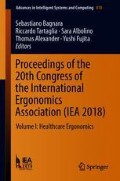Abstract
The comfort range of inhaled air temperature is meaningful to the design of air conditioning parameters at breathing zone. In summer, eight college students and eight middle-aged people were recruited to conduct a thermal comfort study in the natural and air-conditioning environment respectively. The subjects were exposed to different inhaled air temperatures from 18 °C to 34 °C at an interval of 2 °C. The study found that the perceived air quality and thermal pleasure of warm inhaled air is better in the surrounding of natural environment than that of air-conditioning environment. The neutral temperature of inhaled air is 28 °C and 26 °C, respectively. The thermal sensation vote has no significant difference between middle-aged and young people, while the thermal pleasure, air freshness and perceived air quality of middle-aged people are better than that of the young people. When the temperature of the inhaled air is 2 °C higher than the ambient temperature, the SBS symptoms are significantly increased. Therefore, the comfort range of temperature of heated air in winter is worth to be further studied.
Access this chapter
Tax calculation will be finalised at checkout
Purchases are for personal use only
References
Zhang H, Arens E, Zhai YC (2015) A review of the corrective power of personal comfort systems in non-neutral ambient environments. Build Environ 91:15–41
Vesely M, Zeiler W (2014) Personalized conditioning and its impact on thermal comfort and energy performance—a review. Renew Sustain Energy Rev 34:401–408
Wu Y, Liu H, Li B, Cheng Y, Tan D, Fang Z (2017) Thermal comfort criteria for personal air supply in aircraft cabins in winter. Build Environ 125:373–382
Parkinson T, de Dear R (2015) Thermal pleasure in built environments: physiology of alliesthesia. Build Res Inf 43(3):288–301
Fang L, Clausen G, Fanger PO (1998) Impact of temperature and humidity on the perception of indoor air quality. Indoor Air 8(2):80–90
Toftum J, Jorgensen AS, Fanger PO (1998) Upper limits of air humidity for preventing warm respiratory discomfort. Energy Build 28(1):15–23
Fang L, Wyon DP, Clausen G, Fanger PO (2004) Impact of indoor air temperature and humidity in an office on perceived air quality, SBS symptoms and performance. Indoor Air 14(Suppl 7):74–81
Lan L, Wargocki P, Wyon DP, Lian Z (2011) Effects of thermal discomfort in an office on perceived air quality, SBS symptoms, physiological responses, and human performance. Indoor Air 21(5):376–390
Brager G, Zhang H, Arens E (2015) Evolving opportunities for providing thermal comfort. Build Res Inf 43(3):274–287
Fanger PO (1970) Thermal comfort: analysis and applications in environmental engineering. Danish Technical Press, Copenhagen
Karjalainen S (2012) Thermal comfort and gender: a literature review. Indoor Air 22(2):96–109
Mishra AK, Ramgopal M (2013) Field studies on human thermal comfort—an overview. Build Environ 64:94–106
Bischof W, Brasche S, Kruppa B, Bullinger M Do building-related complaints reflect expectations?
Choi J, Aziz A, Loftness V (2010) Investigation on the impacts of different genders and ages on satisfaction with thermal environments in office buildings. Build Environ 45(6):1529–1535
Hong L, Yuxin W, Heng Z, Xiuyuan D (2015) A field study on elderly people’s adaptive thermal comfort evaluation in naturally ventilated residential buildings in summer. J HV&AC 6(45):50–58
de Dear RJ, Brager GS (2002) Thermal comfort in naturally ventilated buildings: revisions to ASHRAE Standard 55. Energy Build 34(6):549–561
Schweiker M, Fuchs X, Becker S, Shukuya M, Dovjak M, Hawighorst M, Kolarik J (2016) Challenging the assumptions for thermal sensation scales. Build Res Inf 45(5):572–589
Li B, Yu W, Liu M, Li N (2011) Climatic strategies of indoor thermal environment for residential buildings in Yangtze River Region, China. Indoor Built Environ 20(1):101–111
ASHRAE (2013) ASHRAE standard 55-2013: thermal environmental conditions for human occupancy. ASHRAE, Atlanta
Parkinson T, de Dear R, Candido C (2016) Thermal pleasure in built environments: alliesthesia in different thermoregulatory zones. Build Res Inf 44(1):20–33
Acknowledgement
This study was supported by the National Key Research and Development Program of China (2017YFC0702700), the Graduate Scientific Research and Innovation Foundation of Chongqing, China (No. CYB18000), and the 111 Project (Grant No. B13041).
Author information
Authors and Affiliations
Corresponding author
Editor information
Editors and Affiliations
Rights and permissions
Copyright information
© 2019 Springer Nature Switzerland AG
About this paper
Cite this paper
Wu, Y., Liu, H., Li, B., Cheng, Y., Kong, D. (2019). Effect of Gender, Age, Air-Conditioning and Thermal Experience on the Perceptions of Inhaled Air. In: Bagnara, S., Tartaglia, R., Albolino, S., Alexander, T., Fujita, Y. (eds) Proceedings of the 20th Congress of the International Ergonomics Association (IEA 2018). IEA 2018. Advances in Intelligent Systems and Computing, vol 818. Springer, Cham. https://doi.org/10.1007/978-3-319-96098-2_23
Download citation
DOI: https://doi.org/10.1007/978-3-319-96098-2_23
Published:
Publisher Name: Springer, Cham
Print ISBN: 978-3-319-96097-5
Online ISBN: 978-3-319-96098-2
eBook Packages: Intelligent Technologies and RoboticsIntelligent Technologies and Robotics (R0)

